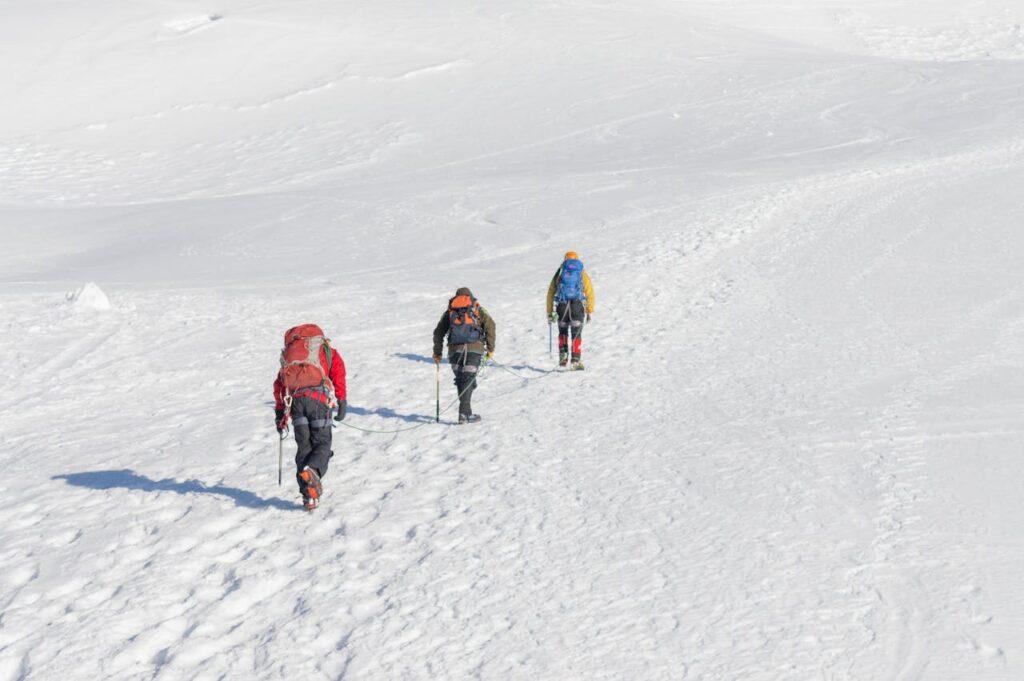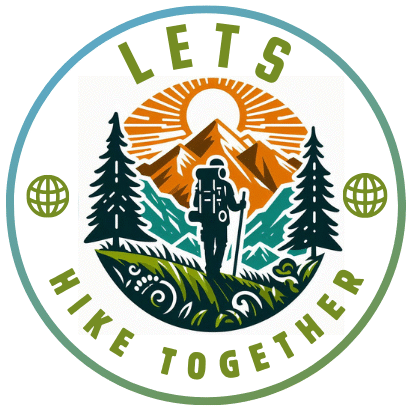Weather can be a fickle friend to hikers, transforming a simple trek into a challenging adventure. From heatwaves and storms to snowstorms and freezing temperatures, unpredictable weather can turn a peaceful trek into a risky ordeal. Understanding how different weather conditions affect your trail and health is key to staying safe and making the most of your hiking experience.

How Extreme Weather Impacts Hiking
Weather conditions can dramatically change trail dynamics. A sunny day can quickly turn into a downpour, while temperatures might rise to dangerous levels or drop below freezing. Being prepared for sudden shifts in weather not only keeps you safe but also enhances your overall hiking experience.
Weather Awareness: Stay Ahead of the Curve
One of the most important tips for hiking in extreme conditions is weather forecasting. Using weather apps or GPS tools provides real-time weather updates so you’re always informed. Tracking weather patterns helps you anticipate changes, which could mean the difference between enjoying your hike and finding yourself in a hazardous situation.
Understanding how seasonal changes impact trail conditions is also crucial. In winter, ice and snow can make trails treacherous, while summer heat can lead to dehydration and heat exhaustion. Knowing when to hike and what to expect can make every trail safer and more enjoyable.
Prepping for Your Extreme Weather Hike: Gear Essentials
When hiking in extreme weather, the right gear is essential to staying safe, comfortable, and prepared. Whether you’re dealing with freezing temperatures, torrential rain, or scorching heat, the right equipment will ensure you can handle whatever nature throws your way.
Clothing and Layers for All Conditions
Layering is key. Moisture-wicking fabrics help regulate your body temperature, while waterproof and windproof jackets protect you from sudden storms. For cold weather, choose insulated outer layers and thermal socks. In hot weather, light, breathable clothing will help keep your body cool.
Hiking Footwear: Choose Wisely
Selecting sturdy hiking boots is non-negotiable, especially in challenging weather conditions. Waterproof boots can help prevent wet feet during rain, while insulated boots are a must for winter hikes. Make sure they’re comfortable and provide ample support for your feet, reducing the risk of blisters or strain.
Essential Safety Gear
Don’t skimp on safety gear. Always carry the following:
- Emergency blankets
- GPS device or hiking app
- Multi-tool
- Headlamp with extra batteries
These tools don’t just add weight, they could save your life if conditions suddenly take a turn for the worse.

Navigating the Trail: Tips for Safe Hiking in Extreme Conditions
Whether you’re hiking in a rainstorm or battling snowdrifts, safety on the trail requires smart decision-making. Knowing how to navigate the trail in adverse conditions will keep you on track and out of harm’s way.
Stick to Marked Trails and Use Technology
Always stay on marked trails and use a map or hiking app to stay oriented. If you’re unfamiliar with the area or facing extreme weather, these tools ensure you don’t lose your way. Trail signs and markers are helpful, but technology provides real-time guidance.
Pacing Yourself: Don’t Overdo It
Hiking in extreme conditions demands that you pace yourself. Whether you’re facing the heat or trudging through snow, listen to your body. Don’t push through exhaustion, take breaks and stay hydrated. Extreme weather can lead to heat exhaustion, hypothermia, or fatigue, so be proactive about resting when needed.
Emergency Preparedness: Always Be Ready
It’s impossible to predict the weather perfectly, so having emergency strategies is crucial. If the weather worsens unexpectedly, know how to find or create shelter and keep warm. Buddy systems are also invaluable for safety, always hike with a partner or let someone know your route and expected return time.

Hydration and Nutrition: Fueling Your Body in Extreme Weather
In extreme conditions, your body needs extra fuel and hydration to stay healthy. Whether you’re battling intense heat or frigid temperatures, managing your nutrition and hydration is key to keeping your energy up and avoiding heatstroke or hypothermia.
Hydration in Extreme Heat
Dehydration can strike quickly, especially in hot weather. Keep a hydration pack or water bottles accessible and take frequent sips. Remember, you may not feel thirsty, but your body needs hydration more than ever in extreme heat.
Cold Weather Nutrition
In cold weather, your body burns more calories to stay warm. Choose high-energy snacks like nuts, dried fruits, and energy bars. These provide quick energy and are easy to store. Make sure your food doesn’t freeze, use insulated bags or a cooler for storage.

Post-Hike Safety and Recovery
Once you’ve completed your hike in extreme weather, it’s essential to prioritize recovery and health checks. Extreme conditions put your body through a lot, and rehydration and nutrition are crucial for post-hike recovery.
Rehydrate and Replenish
After a challenging hike, drink plenty of water or electrolyte drinks to replenish lost fluids. This is especially important after hiking in hot weather or after long treks in the cold.
Assess Your Body for Weather-Related Conditions
Watch for signs of heat-related illnesses like nausea, dizziness, or cramps in hot weather, and hypothermia in colder conditions. Seek immediate medical attention if you notice any severe symptoms.
Join the Hiking Community
After your adventure, take the time to connect with other hikers. Online forums and social media groups are great places to share your experiences and learn from others. These communities offer support and practical tips for your next extreme weather hike.
Conclusion: Hike Smart, Hike Safe
Hiking in extreme weather isn’t just about surviving, it’s about enjoying the journey safely. By understanding weather patterns, gearing up properly, and following safe hiking practices, you can enjoy thrilling outdoor adventures while minimizing risks. Stay prepared, stay aware, and your hikes will be as enjoyable as they are rewarding.

